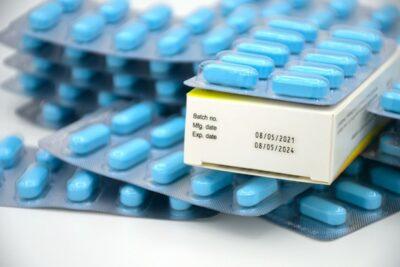Pharmaceutical serialization and track & trace
In the pharmaceutical production process, serialization and track and trace are used by pharmaceutical companies to pinpoint the current and past locations of items in your supply chain.
Regulations mandate track and trace capabilities as well as specific requirements for recording and sharing of supply chain data. This, however, is not the only reason that track and trace is an indispensable tool for pharmaceutical companies.
Read on to learn more about serialization, track and trace and how they help to improve efficiency and safety in the pharmaceutical supply chain, as well as what printing solution is required for serialization.

What is track and trace for pharmaceuticals?
As its name suggests, the function of a track and trace system for pharmaceuticals is to track and trace a medical drug, a vaccine, a medical device, or similar on its journey through the supply chain.
Tracing backward all the way to the individual components or ingredients used to create the item, the pharmaceutical track and trace system seeks to reveal exactly where the item has been in the supply chain.
The benefits of traceability for pharmaceuticals
It is estimated that every year, pharmaceutical companies across the world face billions of dollars’ worth of losses due to stolen or counterfeit products.
The pharmaceutical track and trace system, however, helps prevent these losses. It enables you to follow the trail of any items in your supply chain. There are many benefits to this, including:
- Fast and efficient product returns
- Optimization of efficiency and speed across the supply chain
- Fast and modern recall management capabilities
- Brand protection and increased consumer confidence
- Protection against theft and diversion
- Prevention of counterfeit, adulterated, or expired medications entering the supply chain
- Safety and environmental stability of products
All of these benefits are made possible through the implementation of pharmaceutical serialization.
Serialization: the first step in track and trace
Pharmaceutical serialization strengthens the supply chain by making it more difficult to manufacture counterfeit products.
Serialization endows an item with a unique identifier (UID). The UID allows the item to be tracked and traced around the clock and authenticated at any time on its journey through the supply chain.
Laws and regulations of serialization and track & trace
The laws regarding serialization are different from country to country, which means that serialization regulations are subject to change on this basis.
In some countries, the entire product dose may need to be serialized. In others, even the smallest commercialized or manufactured unit is included in the regulations depending on the prescription medicine batches.
Further, not every country with serialization requirements has requirements for track and trace. However, in order to achieve their goals and benefit from the advantages of the pharma track and trace system, regulators in many countries are beginning to combine track and trace with pharmaceutical serialization.
For example, the US Drug Supply Chain Security Act (DSCSA) currently details that manufacturers are required to start the pharma track and trace process by producing T3 data for drugs at the lot level. T3 data provide information on:
- Transaction history
- Transaction statement
- Transaction information
In the DSCSA, the additional data points supplied via T3 data are a support requirement for serialized products. In Europe, these additional data points are aggregated into a master database (the European HUB) as well as country-specific databases (the National Medicines Verification System).
Equipment: serialization printing solutions
Due to the regulations surrounding DataMatrix codes—i.e. barcodes that can store more data— the printing of serialization UIDs requires certain equipment intended for this purpose.
The printing equipment used for serialization must be able to embed large amounts of data into a DataMatrix code that is both readable and gradable:
- Readable: the barcode’s presence can be verified and the reader of the barcode can identify what is printed.
- Gradable: the barcode can be high-grade verified and graded in six categories:
- Contrast
- Modulation
- Axial Non-Uniformity
- Grid Non-Uniformity
- Unused EC
- Fixed Pattern Damage
Each category gets a specific numeric grade from 0-4 or a corresponding letter grade A-F. The barcode grade is determined by the lowest grade of the six.
This means that your printer solution must be able to print high-grade verifiable barcodes on a wide range of different surfaces.
PPS offers a number of printing solutions for printing tamper-proof industrial marking, coding and product information on a wide range of surfaces. We also offer a long list of services, including installation and renovation of existing equipment, training of technical personnel and delivery of spare parts and consumables directly to our customers.
